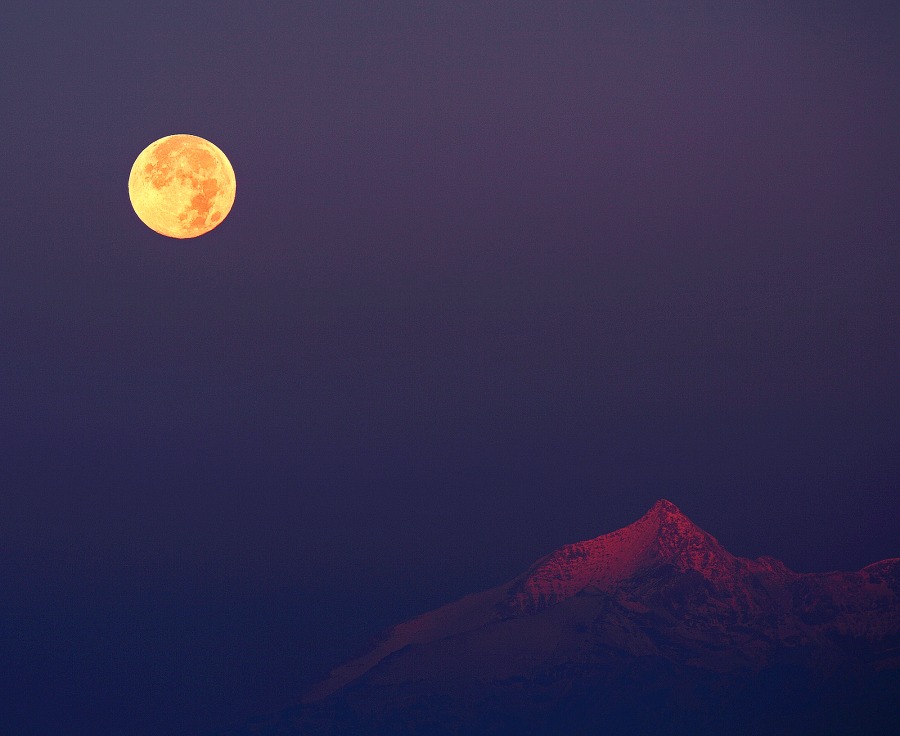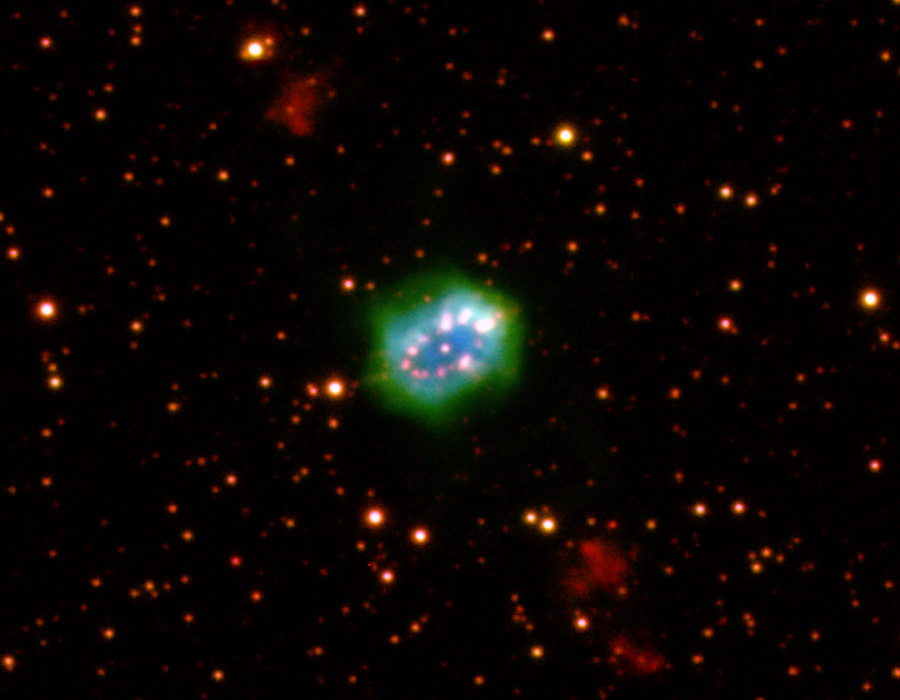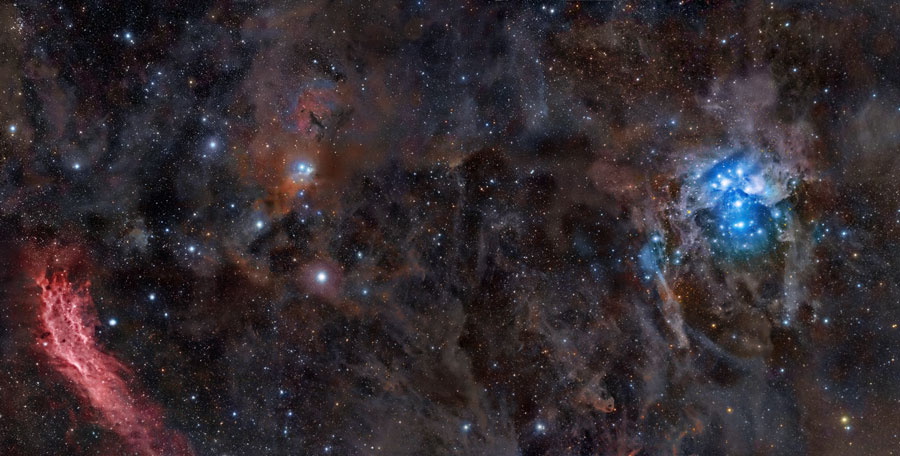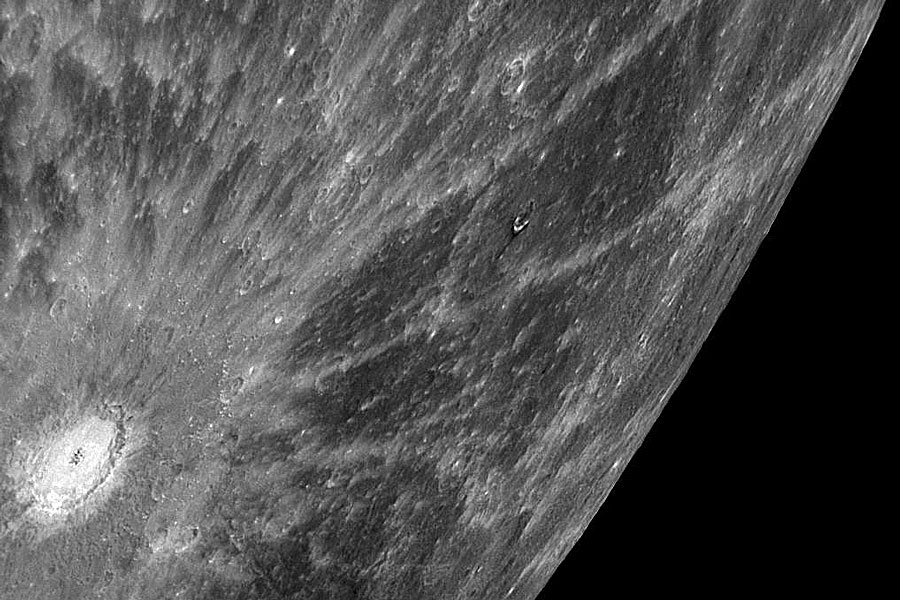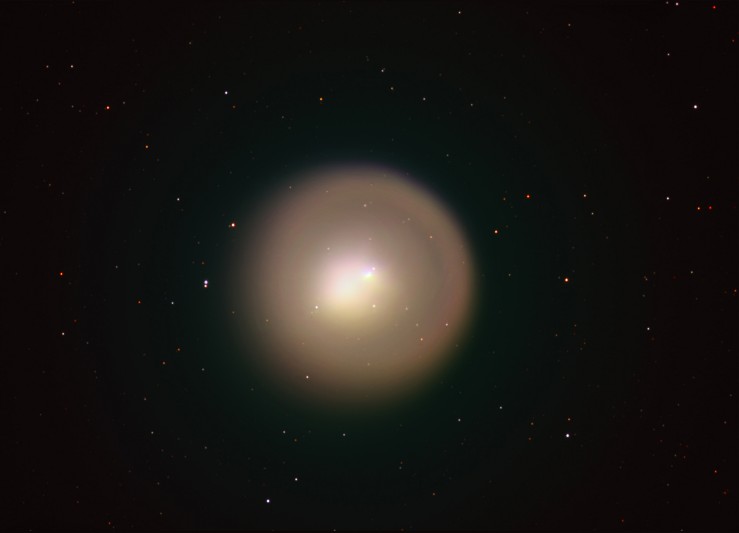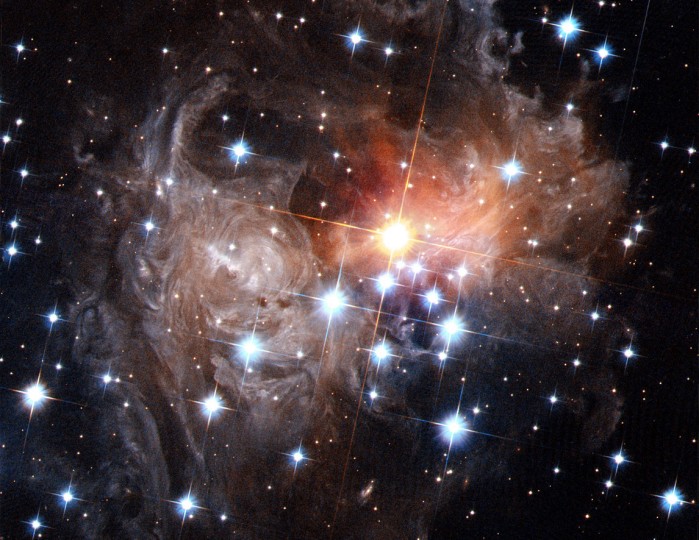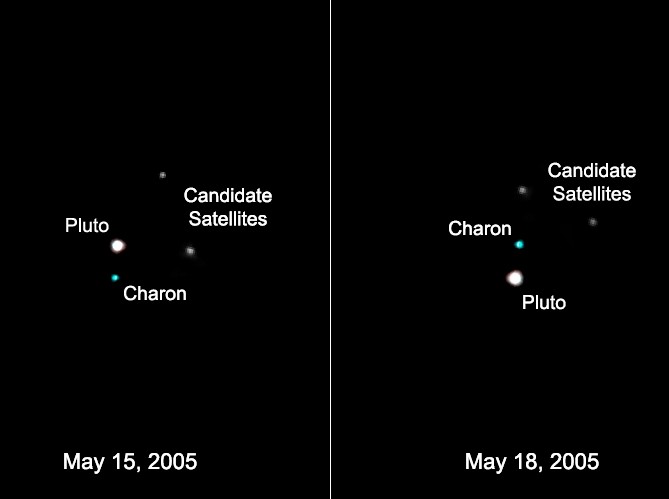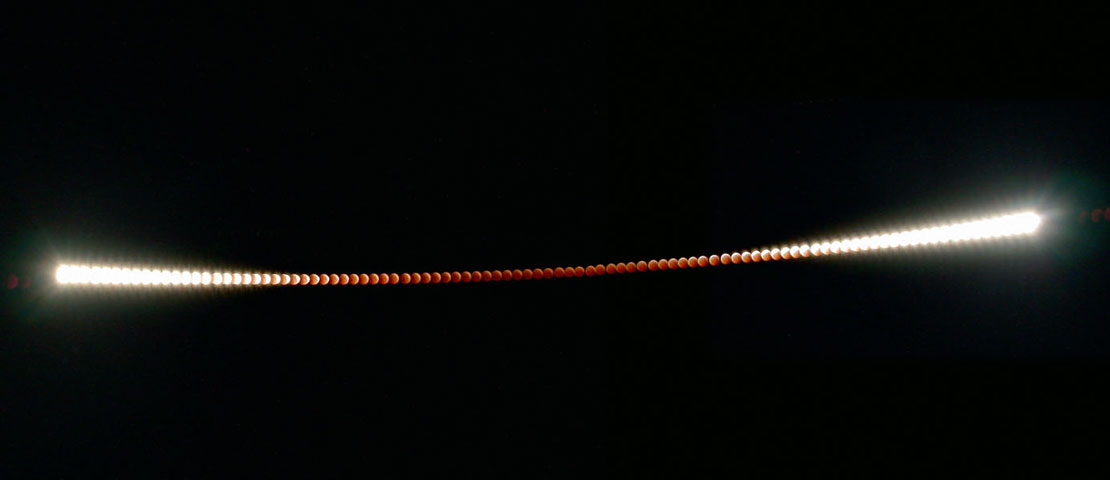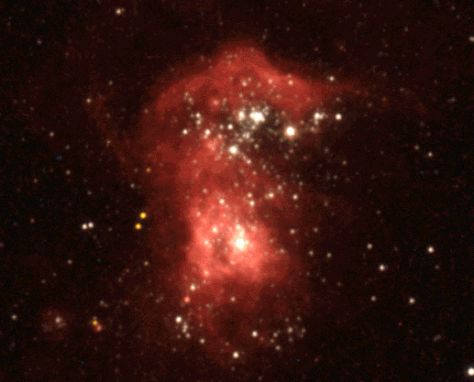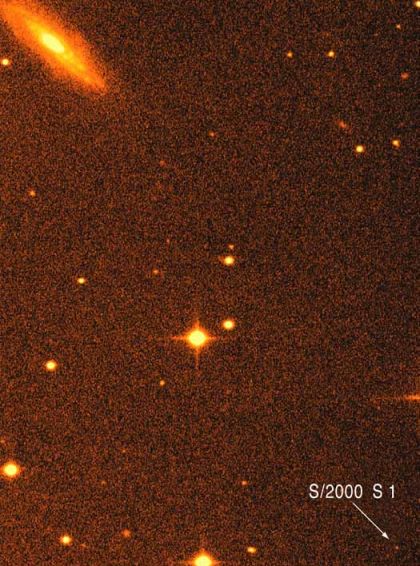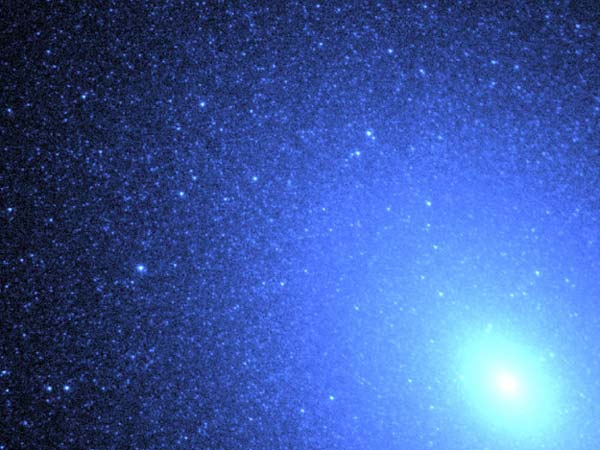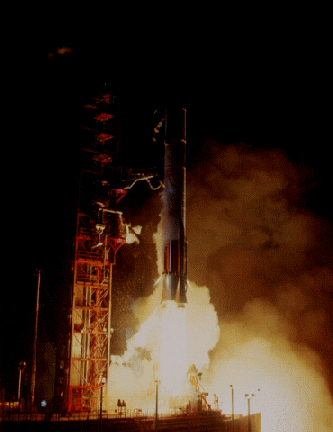| << Previous | Index | Next >> |
2014 Raise your arms if you see an aurora. With those instructions, two nights went by with, well, clouds -- mostly. On the third night of returning to same peaks, though, the sky not only cleared up but lit up with a spectacular auroral display. Arms went high in the air, patience and experience paid off, and the amazing featured image was captured. The setting is a summit of the Austnesfjorden fjord close to the town of Svolvear on the Lofoten islands in northern Norway. The time was early March. Our Sun has been producing an abundance of picturesque aurora of late as it is near the time of its maximum surface activity in its 11-year magnetic cycle.
2013 A spectacular geocentric celestial event of 2005 was a rare hybrid eclipse of the Sun - a total or an annular eclipse could be seen depending on the observer's location. For Fred Espenak, aboard a gently swaying ship within the middle of the Moon's shadow track about 2,200 kilometers west of the Galapagos, the eclipse was total, the lunar silhouette exactly covering the bright solar disk for a few brief moments. His camera captured a picture of totality revealing the extensive solar corona and prominences rising above the Sun's edge. But for Stephan Heinsius, near the end of the shadow track at Penonome Airfield, Panama, the Moon's apparent size had shrunk enough to create an annular eclipse, showing a complete annulus of the Sun's bright disk as a dramatic ring of fire. Pictures from the two locations are compared above. How rare is such a hybrid eclipse? Calculations show that during the 21st century just 3.1% (7 out of 224) of solar eclipses are hybrid while hybrids comprise about 5% of all solar eclipses over the period 2000 BC to AD 3000. Today's hybrid solar eclipse is most widely visible beyond the central shadow track as a brief partial eclipse from northeastern Americas through Africa, and along the track in an annular phase for only the first 15 seconds.
2012 A Full Moonset can be a dramatic celestial sight, and Full Moons can have many names. Late October's Full Moon, the second Full Moon after the northern hemisphere autumnal equinox, has been traditionally called the Hunter's Moon. According to lore, the name is a fitting one because this Full Moon lights the night during a time for hunting in preparation for the coming winter months. In this scene, last week's Hunter's Moon shines with a rich yellow light, setting as dawn comes to the Italian Alps. Topping out at over 11,000 feet, the snowy peak known as Rochemelon glows, just catching the first reddened light of the rising Sun.
2011 These bright rims and flowing shapes suggest to some melting ice cream on a cosmic scale. Looking toward the constellation Cassiopeia, the colorful (zoomable) skyscape features the swept back, comet-shaped clouds IC 59 (left) and IC 63. About 600 light-years distant, the clouds aren't actually melting, but they are slowly dissipating under the influence of ionizing ultraviolet radiation from hot,luminous star gamma Cas. Gamma Cas is physically located only 3 to 4 light-years from the nebulae, just off the upper right edge of the frame. In fact, slightly closer to gamma Cas, IC 63 is dominated by red H-alpha light emitted as the ionized hydrogen atoms recombine with electrons. Farther from the star, IC 59 shows proportionally less H-alpha emission but more of the characteristic blue tint of dust reflected star light. The field of view spans about 1 degree or 10 light-years at the estimated distance of gamma Cas and friends.
2010 The small constellation Sagitta sports this large piece of cosmic jewelry, dubbed the Necklace Nebula. The newly discovered example of a ring-shaped planetary nebula is about 15,000 light-years distant. Its bright ring with pearls of glowing gas is half a light-year across. Planetary nebulae are created by sun-like stars in a final phase of stellar evolution. But the Necklace Nebula's central star, near the center of a ring strongly tilted to our line of sight, has also been shown to be binary, a close system of two stars with an orbital period of just over a day. Astronomers estimating the apparent age of the ring to be around 5,000 years, also find more distant gas clouds perpendicular to the ring plane, seen here at the upper left and lower right. Those clouds were likely ejected about 5,000 years before the clouds forming the necklace. This false color image combines emission from ionized hydrogen in blue, oxygen in green, and nitrogen in red.
2009 On the upper right, dressed in blue, is the Pleiades. Also known as the Seven Sisters and M45, the Pleiades is one of the brightest and most easily visible open clusters on the sky. The Pleiades contains over 3,000 stars, is about 400 light years away, and only 13 light years across. Surrounding the stars is a spectacular blue reflection nebula made of fine dust. A common legend is that one of the brighter stars faded since the cluster was named. On the lower left, shining in red, is the California Nebula. Named for its shape, the California Nebula is much dimmer and hence harder to see than the Pleiades. Also known as NGC 1499, this mass of red glowing hydrogen gas is about 1,500 light years away. Although about 25 full moons could fit between them, the above wide angle, deep field image composite has captured them both.
2008 Why does Mercury have so many rayed craters? No one is sure. The robotic MESSENGER spacecraft that is taking unprecedented images as it swoops past the innermost planet has provided dramatic confirmation that Mercury has more rayed craters than Earth's Moon. Pictured above, a particularly spectacular rayed crater spanning approximately 80 kilometers was imaged by MESSENGER during last month's flyby from about 20,000 kilometers up. The rays prevalence is a mystery because space weathering effects such as dust accumulation and solar wind attenuation should be greater on Mercury than on the Moon. Hypothesized solutions currently include the optical properties of Mercurian dust, and that Mercury's high mass and proximity to the Sun cause more violent impacts, thus typically raising more light material. MESSENGER will buzz past Mercury again next year before entering orbit in 2011.
2007 Surprising Comet Holmes remains easily visible as a round, fuzzy cloud in the northern constellation Perseus. Skywatchers with telescopes, binoculars, or those that just decide to look up can enjoy the solar system's latest prodigy as it glides about 150 million kilometers from Earth, beyond the orbit of Mars. Still expanding, Holmes now appears to be about 1/3 the size of the Full Moon, and many observers report a yellowish tint to the dusty coma. A golden color does dominate this telescopic view recorded on November 1, showing variations across the coma's bright central region. But where's the comet's tail? Like any good comet, Holmes' tail would tend to point away from the Sun. That direction is nearly along our line-of-sight behind the comet, making its tail very difficult to see.
2006 Variable star V838 Monocerotis lies near the edge of our Milky Way Galaxy, about 20,000 light-years from the Sun. Still, ever since a sudden outburst was detected in January 2002, this enigmatic star has taken the center of an astronomical stage. As astronomers watch, light from the outburst echoes across pre-existing dust shells around V838 Mon, progressively illuminating ever more distant regions. This stunning image of swirls of dust surrounding the star was recorded by the Hubble Space Telescope in September of this year. The picture spans about 14 light-years. Astronomers expect the expanding echoes to continue to light up the dusty environs of V838 Mon for at least the rest of the current decade. Researchers have now found that V838 Mon is likely a young binary star, but the cause of its extraordinary outburst remains a mystery.
2005 In 1930, tiny, icy world Pluto was discovered orbiting in the distant solar system. In 1978, its relatively large companion Charon was detected by ground-based observations. This year, the Hubble Space Telescope may well have detected two further members of the Pluto system. Provisionally designated S/2005 P1 and S/2005 P2, the two potential new moons are seen orbiting in a counterclockwise direction about 44,000 kilometers (27,000 miles) from Pluto in these deep Hubble images recorded only three days apart. The diminutive and faint companions are also apparently detected on Hubble images of Pluto from 2002, but this coming February follow-up observations are planned in an effort to confirm the discovery of the new moons. Compared to Pluto's and Charon's diameters of 2,300 and 1,300 kilometers respectively, these moons are estimated to be between 60 and 200 kilometers across. Well within the Kuiper Belt, an extensive region beyond the orbit of Neptune, the Pluto system could be the first quadruple Kuiper Belt object known.
2004 During last week's lunar eclipse, our Moon appeared to disappear. As the Earth moved between the Moon and the Sun, the Earth's shadow fell on the moon, making it quite dark. In the above picture the Earth's rotation, multiple exposures, and digital enhancements are used to create a time-lapse effect that dramatizes how the Moon looked as it faded out and re-appeared during the three hour lunar eclipse. As the Earth's shadow engulfed the Moon, the lunar images became less and less bright, practically disappearing during totality. At this time, the Moon, which normally shines by reflecting direct sunlight, shone only by sunlight refracted through the Earth's atmosphere. The next total lunar eclipse won't be visible from Earth until 2007.
2003 What do stars look like just before they explode? To find out, astronomers are taking detailed images of nearby galaxies now, before any supernova is visible. Hopefully, a star in one of the hundreds of high resolution galaxy images will explode in the coming years. If so, archival images like that taken above by the Hubble Space Telescope can be inspected to find what the star looked like originally. This information is likely important for better understanding of how and why supernovas occur, as well as why some supernovas appear brighter than others. Pictured above, beautiful spiral galaxy NGC 3982 displays numerous spiral arms filled with bright stars, blue star clusters, and dark dust lanes. NGC 3982, which spans about 30,000 light years, lies about 60 million light years from Earth and can be seen with a small telescope toward the constellation of Ursa Major.
2002 The developing International Space Station (ISS) has changed its appearance yet again. Last month the Space Shuttle Atlantis visited the ISS and installed the third of eleven pieces that will compose the Integrated Truss Structure. The new S-1 Truss is visible on the right, below the extended solar panels across the top. The world's foremost space outpost can be seen developing over the past few years by comparing the above image to past images. Also visible above are many different types of modules, a robotic arm, several wing-like solar panels, and a supply ship. Construction began on the ISS in 1998 and the core structure should be in place before 2005. Yesterday, the ISS celebrated its second anniversary of continuous human habitation.
2001 These two clusters of bright, newly formed stars surrounded by a glowing nebula lie 10 million light-years away in the dim, irregular galaxy cataloged as NGC 2366. The Hubble Space Telescope image shows that the youngest cluster, the bottom one at about 2 million years old, is still surrounded by the gas and dust cloud it condensed from, while powerful stellar winds from the stars in the older cluster at the top (4-5 million years old), have begun to clear away its central areas giving the entire nebula an apparent inverted hook shape. Compared to the sun, the stars in these clusters are massive and short lived. The brightest one, near the tip of the hook, is a rare Luminous Blue Variable with 30 to 60 times the mass of the sun - similar to the erruptive Eta Carinae in our own Milky Way. Stars this massive are extremely variable. A comparison with ground based images indicates that in three years this star's brightness increased by about 40 times making it currently the brightest star in this dim galaxy.
2000 Which planet has the most moons? For now, it's Saturn. Four newly discovered satellites bring the ringed planet's total to twenty-two, just edging out Uranus' twenty-one for the most known moons in the solar system. Of course, the newfound Saturnian satellites are not large and photogenic. The faint S/2000 S 1, the first discovered in the year 2000, is the tiny dot indicated at the lower right of this August 7th image made with the ESO 2.2 meter telescope at La Silla, Chile. (An eye-catching spiral galaxy at the upper left is in the very distant background!) Unlike Saturn's larger moons whose almost circular orbits lie near the planet's equatorial plane, all four newly discovered moons have irregular, skewed orbits drifting far from the planet. With sizes in the 10 to 50 kilometer range, they are are likely captured asteroids. The international team of astronomers involved in the discoveries hopes to get many observations of the tiny satellites allowing accurate orbital computations before Saturn is lost in the solar glare around March 2001. The team has also found several other irregular satellite candidates which are now being followed. Saturn's only previously known irregular satellite is Phoebe, discovered over 100 years ago by W. H. Pickering.
1999 Elliptical galaxies are known for their old, red stars. But is this old elliptical up to new tricks? In recent years, the centers of elliptical galaxies have been found to emit unexpectedly high amounts of blue and ultraviolet light. Most blue light from spiral galaxies originates from massive young hot stars, in contrast to the red light from the old cool stars thought to compose ellipticals. In the above recently released, false-color photograph by the Hubble Space Telescope, the center of nearby dwarf elliptical M32 has actually been resolved and does indeed show thousands of bright blue stars. The answer is probably that these blue stars are also old and glow blue, reaching relatively high temperatures by the advanced process of fusing helium, rather than hydrogen, in their cores. M32 appears in many pictures as the companion galaxy to the massive Andromeda Galaxy (M31).
1998 What's bothering local galaxy Sextans A? A small dwarf irregular galaxy spanning 5 thousand light years across, Sextans A is located only 5 million light-years away. Named for its home constellation of Sextans, the "diamond in the rough" structure relates to an ancient unknown event. 100 million years ago, something mysterious started a new wave of star formation in Sextans A's center. Massive short-lived stars exploded in supernovae that caused more star formation and yet more supernovae, ultimately resulting in an expanding shell. Today, young blue stars highlight areas and shell edges high in current star formation, a shell that from our perspective appears roughly square. In the above picture, a bright orange star in our own Milky Way Galaxy appears superposed in the foreground.
1997 Where did these two irregular moons of Uranus originate? Last week two previously undiscovered moons of the distant gas planet were confirmed, the first in irregular orbits. All fifteen previously known moons of Uranus are 'regular', circling near the planet's equator. Most of these were discovered by the passing Voyager 2 spacecraft in 1986. These newly discovered moons are thought to be odd-shaped and about 100 km across. They are considered irregular, though, because they orbit in odd directions and far from Uranus. If Uranus' irregular moons have the same origin as those orbiting Jupiter, Saturn, and Neptune, then they were probably caught from orbits around the Sun. Moons like this are discovered by their motion. One of these moons is shown above as the circled point of light moving from left to right. (To stop the movie from repeating, click "stop" on most browsers.)
1996 In early November of 1967, a dramatic night launch of an Atlas Centaur rocket from Cape Canaveral lofted the successful Surveyor 6 spacecraft toward the Moon. The Surveyor series of robotic probes carried out the first US lunar soft landings in preparation for the Apollo program. Still in use today, Atlas Centaur rockets launched many lunar and planetary probes in the 60s and 70s.
1995 Amalthea is Jupiter's fifth largest moon, much smaller than the four Galilean satellites Io, Europa, Ganymede, and Callisto. The orbit of Amalthea is inside of these moons, and with its long axis always pointing toward Jupiter. It's dark surface color is probably due to sulfur being expelled from Io. Amalthea is not massive enough for its internal gravity to make it spherical. Amalthea was discovered in 1892 by Edward Barnard.
| << Previous | Index | Next >> |


